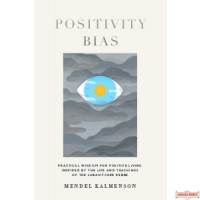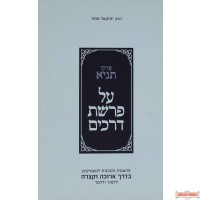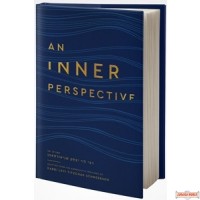Kabbalah,Mysticism & Chassidus
- A Guide to Good Health — Mental Health
Letters and talks of the Lubavitcher Rebbe, Rabbi Menachem M. Schneerson Learn More
- One By One: From the acclaimed weekly Here's My Story Series.
Read sixty-six vividly diverse stories of guidance, perspective and encouragement. Experience the essence of the Rebbe’s soul-to-soul leadership.
The psychiatrist with a vision for change. The lonely yeshivah student. The young girl looking for direction. The scientist buried in research work. Each of them was moved by a powerful and timeless encounter with the Rebbe.
Read One by One, and join them as they open the door to their personal stories. Be uplifted together with them and enrich your life with the Rebbe’s practical guidance and transformative inspiration. Learn More
- Through a mix of nature, nurture, social conditioning and free will, we each possess a personalized lens that frames, forms, clouds and distorts the way we see ourselves and the world around us. In order to live in the most meaningful and effective way possible, each of us needs to continually assess and adjust the default frames we have developed.
In Positivity Bias, we learn that life is essentially good; that positive perception is applicable and accessible to all; that it derives from objective, rational insight, not subjective, wishful imagination, and that positive living is a matter of choice, not circumstance.
An inspiring and life-enriching tapestry woven from hundreds of stories, letter, anecdotes, and vignettes - Positivity Bias highlights how the Lubavitcher Rebbe, Rabbi Menachem M. Schneerson, of righteous memory, considered the most influential rabbi in modern history, taught us to see ourselves, others, and the world around us. Learn More
This volume deals with the past, present, and future. It speaks of why God created the world to begin with, and Man's role in that ongoing Creation. It speaks of the Presence of God in the world and Man's ability to attract or repel the Shechinah. Most importantly, it speaks of the relationship between Man and God. Beginnings explains the overarching theme of the book of Bereishis, the whole Torah, and for that matter, all of life.
About the Author:
Rabbi Yaacov Haber has been a leading force in Jewish education for over forty years. He is presently the rav of Kehillas Shivtei Yeshurun, a vibrant community in the center of Ramat Bet Shemesh, Israel.
Before arriving in Israel, Rabbi Haber served as the rav of Congregation Bais Torah in Monsey, NY, and the national director of Jewish education for the Orthodox Union. At the same time, he created TorahLab, a popular online educational resource center.
He was a founder of AJOP, the Torah Center of Buffalo, and the Australian Institute of Torah. Learn More
- Rabbi Levi Yitzchak Schneerson, father of the Lubavitcher Rebbe, Rabbi Menachem M. Schneerson, of righteous memory, was a profound Torah scholar who served as the rabbi of the Ukrainian city of Yekaterinoslav (now Dnepropetrovsk). He is said to have composed thousands of pages of original Torah thoughts and discourses. The bulk of these writings are considered lost during the tumultuous years of WWII, and extant today are only those he penned on the margins of the few books he had during his final years, while in exile in Chi’ili, in far-off Kazakhstan. More than a decade after R. Levi Yitzchak’s passing in Alma-Ata in 1944, these writings were brought to the United States, where they reached his illustrious son, the Lubavitcher Rebbe. In the 1970s, they were published in five volumes under the titles of Likkutei Levi Yitzchak and Torat Levi Yitzchak, and the Rebbe began regularly expounding on these terse glosses at his public addresses.
Comprising sixteen essays, the present work was adapted by Rabbi Eli Block from R. Levi Yitzchak’s original works as well as from the Rebbe’s elucidations. Learn More
- A chasidic discourse by Rabbi Shalom DovBer Schneersohn of Lubavitch
Once a year, on Yom Kippur, the High Priest would enter the Holy of Holies to perform the required duties. Generally, the entry into this innermost sanctuary was forbidden. It was only on Yom Kippur, the holiest day of the year, that permission was granted for the High Priest alone to enter.
The current discourse, delivered by R. Shalom Dovber Schneersohn, fifth Lubavitcher Rebbe, on Shabbat Parashat Acharei, 5679 (1919), analyzes the biblican verse which forbids any human being from being present in the sanctuary when the High Priest entered to seek atonement. If, as the verse in Leviticus states: "No man shall be int he Tent of Meeting" at that time, how could the High Priest himself be present?
By Thoroughly exploring the soul and all of its components, the discourse explains how the High Priest, on Yom Kippur, transcended the normative bounds of human limitation and ascended to the sublime level of "no man." This granted him the permission and sanction to enter the Holy of Holies.
In practical terms, says the Rebbe, this is the challenge of man: To access and utilize the sprarational dimension of the soul to reveal G-dliness within the world, through repentance, the study of Torah, and performance of mitzvot. Learn More
- Current today as when originally provided, this volume is a collection of the Lubavitcher Rebbe’s counsel to the bereaved. Whether responding to a widow struggling to explain her husband’s death to her children, or to a community whose school was the target of a terrorist attack, the Rebbe, provided support and solace to individuals and communities experiencing loss and tragedy, guiding them toward the hope for a brighter future. Learn More
- הכנות חסידיות לנער הבר מצוה
מאמרי בר מצוה מבוארים, איתא במדרש תילים תרנ"ג, וחזקת והיית לאיש תשכ"ח, איתא במדרש תהלים תשכ"ח, ילקוט חזרת דא"ח, הוראות, מנהגים, סיפורי חסידים Learn More












